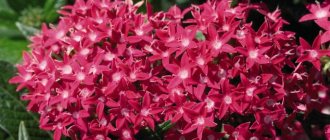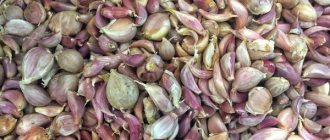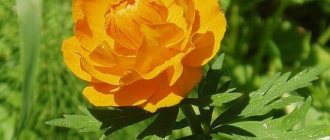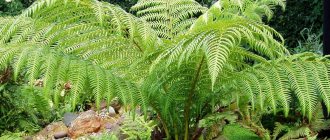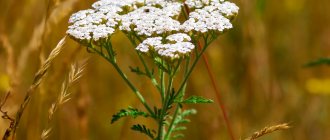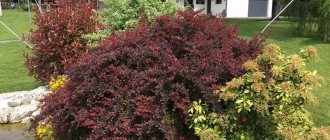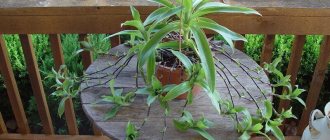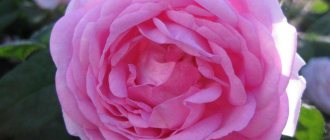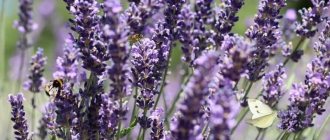It is believed that this amazing representative of the plant kingdom was named after the hero of ancient Greek myths Achilles - legend says that he was cured with the help of the yarrow flower. In fact, the plant does not have a thousand leaves. There are much fewer of them. But the number of flowers is many times greater than this value.
People also call yarrow grass white porridge. There is also such a name as whitehead.
general information
Yarrow has a well-developed rhizome consisting of branched rods. The shoots are straight, branch little, become woody in the lower part, and grow from 15 to 100 cm in height. The leaves are alternate, pinnately dissected, green, gray or gray-green in color.
Corymbose inflorescences form on the tops of stems and bloom in mid-summer. They consist of a large number of small baskets (size 3-20 mm). The middle of the basket is formed by tubular bisexual yellow-gray flowers. They are framed by reed flowers and are characterized by a mixture of colors. The outer petals are white, pink, yellow, and lilac.
Characteristics
The herb has a fairly strong aroma. The taste is slightly bitter. The flowering period can last all summer, the duration depends on the variety. Flowers, leaves and stems are harvested for medicinal purposes. Used to combat many ailments.
100 g of plant contains 23 kilocalories.
Types and varieties of yarrow
The genus of yarrow is represented by 150 species. He is part of the Astrov family. A perennial herbaceous plant grows naturally in many regions of Russia. Breeders are working on developing new ornamental varieties. The height of the garden perennial stem is 20-120 cm, the color of the baskets is lemon, golden, white, pink.
Yarrow
The species grows in the steppe, pine forest, and on mountain slopes. It can be found in Western Siberia, in the southern regions of Russia, in the foothills of the Caucasus. The perennial bushes are not striking in height; they do not exceed 70 cm.
The entire length of the stems is covered with pinnately dissected leaves of gray-green color. In the root zone they are ovoid. In June, snow-white inflorescences-baskets bloom. They are dense and large.
Advantages of the type:
- frost-resistant, not afraid of 30 °C frost;
- does not spread;
- blooms early.
Yarrow large-headed
It is found naturally in the Far East, in Japan, and grows in meadows. The length of the stems is 60 cm. They are covered with double-serrate, lanceolate leaves. The shape of the baskets is hemispherical, the color is white. The large-headed species of perennial blooms in August.
Yarrow meadowsweet
The meadowsweet variety of perennial is found in the Caucasus and Central Asia. The plant is tall - 1.2 m. The stems are covered with lacy gray-green leaves. Flat corymbose inflorescences consist of small baskets (5 mm), formed by yellow tubular flowers and golden margins. The inflorescences reach 13 cm in cross section and bloom in July.
The following varieties are suitable for amateur floriculture:
- Parker;
- Schwellenburg;
- Moonshine.
Yarrow ptarmika
The decorative species grows in natural conditions in the European part of Russia and was cultivated in the 16th century. In dry years, the stems grow up to 35-55 cm, in favorable weather conditions - up to 100 cm. The erect shoots of the herbaceous perennial are covered with pointed serrated leaves. The length of the solid leaf plates is 2-6 cm.
Flowering can last 1-2 months. Thyroid inflorescences bloom at the end of June. They are assembled from baskets whose diameter is 10-17 mm. Terry varieties of ptarmika are grown in gardens:
- Pearl Blapunkt;
- Perris White;
- Stephanie (new);
- Boule des Neiges.
See also
Descriptions of the best varieties of chrysanthemums that winter in open ground and are perennialRead
Yarrow tomentosa
The species is found in Western Siberia and the southern regions of Eastern Europe. Flower growers plant felt varieties in rock gardens. Low bushes (15 cm), growing, form a carpet. The diameter of one plant can reach up to 45 cm.
Silvery leaves are pinnately dissected with pubescence. In winter, they hug the ground and do not die. Yellow-lemon baskets are collected in corymbose inflorescences. Their diameter reaches 7 cm. The Aurea variety is popular among amateur gardeners.
Yarrow
The variety is widespread everywhere. Used as a medicinal and ornamental plant. Stems are straight (0.8 m). The leaves are alternate, sessile at the top, with stalks at the bottom. Leaf blades are pinnately dissected.
The baskets are small (7 mm), formed by tubular yellow flowers and ligulate pink, white or purple flowers. The variety blooms for almost 2 months. The inflorescences bloom in July and fade on August 10-15.
The following varieties are grown on private plots:
- Terracotta;
- Cerise Queen;
- White Beauty;
- Summervine.
Garden yarrow
Perennial golden yarrow is grown in gardens and winter greenhouses. Flowering shoots of tall varieties are used in bouquets. The yellow garden look looks especially impressive in group plantings. Garden varieties are used as dried flowers; long flower stalks are included in dry winter bouquets.
Decorative yarrow
Decorative varieties of herbaceous perennials were obtained during breeding work. Main characteristics of cultural forms:
- stem length 70 cm;
- basket size 3 mm;
- diameter of inflorescences 20 cm.
Yarrow Pearl Oyster
Early flowering is the main advantage of the variety. When sown with seeds, the herbaceous perennial blooms in the first year of life. Terry inflorescences resemble white pearls. They envelop compact bushes (65-75 cm) in a snow-white cloud.
Yarrow Cherry Queen
Medium-sized perennial. The stems grow up to 80 cm during the season. The plant has a strong root system. It grows quickly, taking over the territory. The corymbose inflorescences are cherry-red, bloom in August, and consist of many small flowers.
Yarrow Red Velvet
The height of the perennial is 80 cm. It prefers the sun, but can grow in light partial shade. Carmine-red inflorescences bloom in June. Flowering continues until August.
Yarrow paprika
Refers to the species of common yarrow. It blooms for 45 days, the first red inflorescences bloom in June. The center of the baskets is yellow. The stems are 45-60 cm long, covered with alternate, pinnately dissected leaves. The variety winters well.
Double yarrow Dew drop
The perennial remains decorative all summer. Blooms luxuriously. Bushes 60 cm high during flowering are abundantly covered with snow-white inflorescences (12 cm), consisting of terry baskets. Flowering lasts from June to October.
Yarrow naked
The species is very rare. You can meet the perennial only in the Donetsk steppe. The length of the erect, branched shoots is 20-40 cm. They are covered with separate, serrated leaves. The color of the baskets is yellow, they are collected in apical inflorescences.
Yarrow Madison
Garden perennial with straight stems 50-70 cm high, covered with beautiful openwork leaves. In July, dense inflorescences (15 cm) of different colors form at the tops of the shoots. Flowering lasts until August. The perennial winters well and can grow in partial shade.
Asian yarrow
Low-growing appearance. The maximum length of the stem is 60 cm. In nature, Asian yarrow grows on the coast of the Sea of Okhotsk. It blooms from July to August, pleasing with beautiful purple inflorescences. They consist of small baskets (3 mm).
Alpine yarrow
Low-growing perennial (30-75 cm) with a short rhizome, straight, pubescent stems. Leaves are linear-lanceolate, sessile. The shape of the inflorescence is corymbose. It is formed by semi-ovoid white baskets. Inflorescences bloom in July, flowering lasts until September.
See also
Planting, growing and caring for begonia, how it reproducesRead
Yarrow ageratofolia
This species is used as a ground cover plant. Bushes covered with light gray leaves (15 cm high) grow well on poor, rocky soil. The low-growing, unpretentious perennial is planted on alpine hills and in rockeries.
The perennial is decorative not only during flowering from July to August. Small bushes are good in spring and autumn. Herbaceous plants are decorated with narrow-lanceolate leaves with white pubescence. Snow-white baskets measuring 2.5 cm.
Yarrow New Vintage Red
The variety is recommended to be planted in sunny areas of the garden. It tolerates frosty winters (-29 °C). The inflorescences bloom in June. New Vintage Red continues to bloom until August. Variety characteristics:
- height 30-35 cm;
- bush diameter 25-30 cm;
- The color of the baskets is red, the center is cream.
Botanical description
Achillea is a well-known medicinal plant from the Asteraceae family. It is a perennial and grows everywhere in temperate climates, spreading to arctic latitudes and climbing to highlands. More than 10 species live in Russia, some of them are listed in the Red Book.
The most common is the common yarrow - a herbaceous plant with a creeping root and many dissected large leaves rising from the base of the stems in the form of a rosette. The peduncles are strong, straight, have branches at the ends, and are covered with small stem leaves. In the natural environment, the stems grow up to 70 cm.
The flowers are collected in baskets, and those, in turn, are collected in large inflorescences (corymboses or racemes). The outer petals of natural species are white, pink or pale lilac, the middle is yellow. Garden forms boast a wide range of shades of red, lemon, and purple. The attractiveness of the crop is largely due to drought resistance, frost resistance and tolerance to any lighting and soil composition.
Planting and caring for yarrow
The ornamental crop grows on any type of soil and develops best at pH values of 6-7 units. When choosing a location, take into account the light-loving nature of the perennial and its aggressiveness. He quickly develops the surrounding areas.
Fertilizing is carried out in the spring. Mineral fertilizers containing nitrogen, phosphorus, and potassium are applied. Organic yarrow is contraindicated. In summer, the perennial is watered once a week if there is no rain.
Once every 4 years, adult bushes are replanted. They are doing this in the spring. In summer, faded flower stalks are trimmed. Timely pruning preserves the plant's decorative appearance and reduces the likelihood of self-seeding.
For medicinal purposes, flowering plants and their upper parts are cut off. Before frost, the stems are shortened to 10 cm, and the soil is mulched with humus. In regions with little snow, a flower bed with perennials is covered with lutrasil.
Flower growers obtain new varieties by growing them from seeds through sowing in open ground or seedlings. When to plant is indicated on the seed packet. Seedlings are sown in early to mid-February. Already in April, the seedlings are ready to be transplanted into open ground.
3. Useful properties and contraindications for the use of herbs
The medicinal properties of this plant are due to the many beneficial substances contained in the inflorescences and green mass. Elements found in the juice of the grass include iron and manganese, chromium and zinc, nickel, copper, cobalt and lead.
- A specific alkaloid such as achilein is capable of stopping bleeding within a short period of time.
- Yarrow essential oil contains chamazulene, an antioxidant that can eliminate allergy symptoms and has a bactericidal and healing effect. This substance is often used in cosmetology and in products for the care of teenage skin, as it perfectly fights acne.
- Proazulene is a substance that can lower blood pressure and has antispasmodic and anti-inflammatory effects.
- Borneol, used in cosmetology to care, moisturize and restore problematic skin, as well as to improve the condition of hair and prevent hair loss.
- Coumarin - used to treat nervous system disorders and various diseases of the upper respiratory tract, and also has a laxative effect.
- Camphor is a substance that stimulates the central nervous system, regulates cardiac and respiratory activity, and reduces pain in muscle pain, rheumatism, and arthritis.
- A flavonoid such as epigenin prevents and slows down the development of certain types of cancer, removes carcinogens from the body and acts as an antioxidant. Interestingly, in production it is used to dye fabrics yellow.
- Eugenol, used in medicine as an anesthetic and antiseptic.
- Luteolin is an immune stimulant and has antioxidant properties.
- Vitamin B4 or choline - has a positive effect on intestinal function and promotes rapid transmission of signals from the nervous system, as well as promoting tissue regeneration and used for the prevention of strokes and heart attacks, Alzheimer's disease and atherosclerosis.
- Asparagine is an amino acid that regulates the activity of the nervous and endocrine systems. The plant also contains various flavonoids and tannins, phytoncides, carotene, vitamins C and K.
- Plants contain acids such as salicylic, formic, acetic, and aconitic.
↑ Up,
Yarrow infusion is taken orally as a means of accelerating metabolism and, as a result, can increase appetite, stop internal bleeding, remove excess bile from the body, and relieve intestinal spasms. Some substances in herbal mixtures with yarrow can coat the stomach during gastritis and ulcers, and improve the condition of the urinary system and liver.
Rinse the mouth with infusion to reduce bleeding gums. Washing with a decoction or infusion allows you to regulate the activity of the sebaceous glands and reduces oily skin. Rinsing hair stimulates hair growth and improves appearance.
Herbal teas soothe and help fight insomnia, relieve headaches, and relieve attacks of nausea and dizziness. The plant is also used for menstrual irregularities in women, to combat parasites and improve milk secretion during breastfeeding.
↑ Up,
Fresh green juice is applied in the form of compresses to damaged skin for speedy healing.
Most often, yarrow is used in combination with other medicinal plants:
The herbal mixture of yarrow with chamomile is used for various inflammations and disorders of the gastrointestinal tract, to restore the liver, problems with the urinary system, for gynecological diseases, for washing and baby baths, and for the treatment of pancreatitis.
↑ Up,
In combination with St. John's wort to combat excess weight, treat liver, cholecystitis, circulatory disorders, enuresis and skin problems.
Infusions of yarrow with tansy for disorders of the liver, gall bladder and pancreas.
For infectious diseases, colds, spleen dysfunction, allergic reactions, a decoction of calendula is used as an immunomodulatory agent. Also, extracts of these plants are used to heal burns and frostbite, and to rejuvenate the entire body.
↑ Up,
In combination with wormwood, it fights the symptoms of gastritis, strengthens the immune system, and is a choleretic agent.
The collection of yarrow with nettle is used for bleeding, treatment of skin diseases, metabolic disorders, and wound healing.
Interestingly, the use of yarrow does not end there. Volatile essential oils contained in plants can repel many pests of garden and indoor plants - such as spider mites, ants, scale insects and thrips, as well as aphids. Abundant and long-lasting flowering attracts many pollinators, such as bees.
↑ Up,
The characteristic taste of the herb allows it to be used in the preparation of various drinks - it is reminiscent of another famous plant - tarragon.
The most common contraindications for the use of this flower are allergic reactions, rapid blood clotting, thrombophlebitis and atherosclerosis.
Pregnant women and children under 6 years of age, as well as patients suffering from excess stomach acid and hypotension (low blood pressure), should not take herbal preparations internally. If the dosage is exceeded, skin rashes and dizziness may occur.
↑ Up,
Yarrow propagation
You should not propagate perennials with your own seeds. Seedlings do not retain varietal characteristics; plants degenerate over time. Gardeners practice vegetative methods of propagation. In autumn and spring - by dividing the bush, in summer - by green cuttings.
In summer, the tops of the shoots are cut off. For rooting in partial shade, a ridge is built. Sand, humus, and peat are added to the soil. Before planting, cuttings are treated with a growth stimulator. Seedlings of herbaceous perennials are transplanted to a permanent place after the roots have formed.
Divide 3-year-old bushes in spring or autumn. They dig them up by the roots, cut them into pieces and plant the sections in a new place. The bush grows in one place for no more than 3 years.
6.Pruning
Yarrow does not need formative pruning. After flowering, cut off the inflorescences, trying to prevent self-seeding. In addition, dry shields with seeds spoil the appearance of the bushes. The shoots are trimmed with a sharp, sterile garden tool.
Before the onset of autumn cold, the entire ground part of the flower is cut off, leaving stumps about 5 cm high. In areas with harsh and snowless winters, the bases of the bushes are mulched with fallen leaves or spruce branches. When grown in the middle zone, winters usually pass without shelter.
↑ Up,
Partners for yarrow
In the garden, the herbaceous perennial fits well into garden compositions. There are many use cases. This allows for a wide range of colors and different heights of stems of varietal varieties.
Sage can be considered an ideal neighbor. This culture is also unpretentious and retains its decorative effect for a long time. Against the dark background of sage, bright inflorescences look especially bright.
The varietal perennial is planted next to sun-loving, flowering plants. The color of the flowers does not matter. Suitable neighbors would be decorative tall cereal crops, rudbeckia, catnip, and lavender.
All types of perennials have a special property. They enrich the soil with sulfur. This must be taken into account when choosing neighbors. Ornamental crops that respond well to sulfur compounds should be planted next to it.
Use in landscape design
The delicate, soft foliage of yarrow is pleasant to the touch and pleasing to the eye of gardeners. The plant can be used to frame a flower bed with colorful flowering plants or as accents in the middle of the lawn. Yarrow is planted to fill the space between bushes, in mixborders and rock gardens. To make the flower garden more saturated, several varieties of yarrow with different colors of inflorescences are usually combined. It can also be accompanied by delphiniums, lavender, sage, echinacea, poppy, and chamomile.

